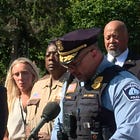FBI Investigation into Fatal Shooting of Charlie Kirk at Utah Valley University
The incident took place during an event on campus, where Kirk was targeted by an individual using a high-powered bolt-action rifle.
UNITED STATES — On September 10, 2025, a fatal shooting occurred at Utah Valley University in Orem, Utah, resulting in the death of Charlie Kirk. The incident took place during an event on campus, where Kirk was targeted by an individual using a high-powered bolt-action rifle.
Federa…
Keep reading with a 7-day free trial
Subscribe to The Standeford Journal - News, Intel Analysis to keep reading this post and get 7 days of free access to the full post archives.





